By: Jason Ilowite
When we reach way back in our memory banks to when we were new drivers, I would venture to say most of us dreamed about rolling down the road in a nice new luxury or sports car some day. We all, however, recognized the importance of learning on the older model, that certainly wasn’t new. It was during this process we learned the mechanics of being a successful driver, and those experiences allowed us to feel comfortable enough to purchase a nice new vehicle when we were ready. How in the world could this analogy regarding a typical teenage process have anything to do with technical rope rescue? Allow me to explain.
I distinctly remember sitting in my first high line rescue class as a member of a Fire Service technical rescue team. It was a mere 6 months or so after my initial rope rescue training in basic anchors, mechanical advantage, and raising/lowering systems. Due to the fact that there were no “in between” classes, the only option was to take the technician level class next which strictly dealt with horizontal rescue systems. I knew next to nothing about calculating forces on anchors, critical angles, safety factors, or really any true theory behind the skills I had been “trained” to perform. The reason for this is because “the why” had been left out of my initial training. I was instructed on “how” to build a basic pulley system, “how” to conduct a pick off, “how” to tie a basic anchor etc., but no one ever included the reason “why” I was doing what I was doing. Sitting in that technician level class I had started the process of driving the Cadillac before I had mastered being a good driver in something less than luxurious.
So Why is the Aforementioned a Troubling Trend in Fire Service Tech Rescue?
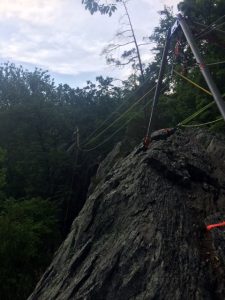
High lines are quite possibly the pinnacle of a rope rescue operation. They require each and every person involved, with constructing it to be very knowledgeable in every aspect of rigging.That doesn’t just include being able to perform skills, but also understand rigging theory. Currently, in the Fire Service in most places of the country, individuals are being taught to the operations level, which is all the basics and then go straight to technician, which is all high lines. All the while these individuals are balancing proficiency in vehicle rescue, confined space rescue, trench rescue, and possibly more. This creates a rope rescue practitioner who is more than likely not truly ready to embark on the very technical journey that is high lines. Why is it so vitally important that only the right people learn and construct high lines? This is the most simple answer yet: safety! High lines are really the only time in rope rescue that we have the potential to be operating within an unsafe safety factor if we don’t know how to tension properly. There is no other operation with rope that will put more stress on our anchors, and let’s face it we’re dealing with a rope under a lot of tension; if it fails, there will be no gently letting down… It will fail with gusto, to say the least. I have said in previous writings; technical rescue is not meant to be taught to the lowest common denominator. A subject as advanced as high lines is not suitable for the masses, but rather only those who are ready.
“High lines are really the only time in rope rescue that we have the potential to be operating within an unsafe safety factor if we don’t know how to tension properly.”
Back to my first high line class experience. Once again, “the how” rather than “the why” teaching was prevalent. As a novice-at-best rope practitioner, I sat naively through class and accepted each instruction as the right way as it came to me. As I developed as a rope rescue technician and attended training with people of all rope back rounds and from all over the country my eyes were opened, my jaw was dropped, and I vowed to try and rectify the generally incorrect way the Fire Department in my area was teaching high lines. I would like to identify what I consider to be the most important concepts to understand to successfully rig high lines below.
Tensioning Methods
I am specifically referring to pre vs. post tension. It is vitally important that this concept is understood. Unfortunately, in the Fire Service, this is often overlooked. In order to maintain a 10:1 safety factor, we must not load the rope past 4kN. This requires us to tension the high line with 1 or two people pulling on a 3:1 initially, loading the system with the rescuer, and then post tensioning using the rule of 12 or 18 to the desired amount. Note: if at all possible use a load cell when rigging a high line. The rule of 12 or 18 is all theoretical, and when dealing with the forces we are going to put on our system we deserve to know exactly how much tension is in our track line. I have seen with Fire department teams that pre-tensioning doesn’t exist. They take their 6 people hauling on a 3:1 and pull the heck out of the track line until they can’t pull anymore. At this point, there is likely already 4kN on the rope before it is even loaded. They then load the system and go about their business. When the load is center span, the track line is almost flat and there is an astronomical amount of force on the track line anchors and no one ever knew. This is a horribly dangerous practice and needs to be rectified.
Anchoring
Not just know how to tie a tensionless wrap, but understanding why to use a certain anchor over another one. With a Kootenay high line system, everything must maintain full strength including, and especially the anchors. For example, if a single track line is in place, the anchor it is rigged to should be capable of receiving 40kN. This is not always a possibility as the anchor sits in nature so it is incumbent upon the rope technician to understand how to focus anchors, using tensioned back ties. Without this advanced anchoring knowledge, the team has severely limited their options and is much more likely to use an unacceptable anchor for a high line.
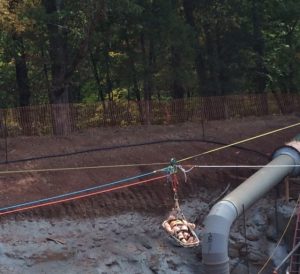
Critical Angles
This could potentially be the most important and it closely relates to the amount of tension you put in the high line. If a team is rigging a high line they must understand the force multiplying potential that the angle of the track line could have on the anchors and the rope itself. As we know, at 150 degrees with a load hanging in the center, there is twice the load on either side of the high line carriage. Put that into perspective. The rescuer and victim will equate to roughly 2kN, when they are center span of the high line, at 150 degrees, there will be 4 kN on either side of the Kootenay pulley. As stated earlier, if we wish to maintain a 10:1 safety factor, we should not allow any more force than 4kN. So does your team know how 160 degrees would change this? 170? A team that is successful in rigging high lines is one that knows exactly the force being applied to various components of their system given the centenary angle of the high line.
High Directionals
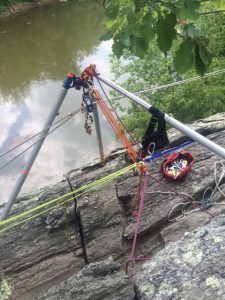
Most often a high line requires the use of a high directional of some sort at the edges of each opposing station in order to give the track lines some elevation. It is crucial that the team be very well versed with the use and associated physics of their chosen high directional. Remember, the force we put in our track lines will exceed the amount of force seen in any other rope operation. You must consider the effect on your high directional. I watched a high directional pancake to the ground under the extreme compression generated from a twin track high line because the tripod was not rigged correctly, but that’s a story for another day.
Having a thorough understanding of all aspects of a rope operation to include general logistics, housekeeping, and communications is additionally of great importance, however, the items above are those that I truly feel need a mastery in order to delve into high line rigging. There are steps to take to bridge the gap so to speak from rope operations to rope technician. The most important being developing an extremely high level of competency in the basics of rope rescue taught in rope operations. Spend the time to master these skills, and get to the point where you even feel comfortable teaching them. Resist the temptation to take your high line class immediately after your operations class simply because it is offered, and to “get it over with”. Another wise step to take would be to investigate the use of offsets. These systems that come from the ingenuity of Reed Thorne from Ropes that Rescue employ basic raising/lowering principles in order to move loads horizontally. In many respects, offsets have the potential to accomplish exactly what a high line would without the intense manpower requirements, and stringent rules of a Kootenay high line system.
“Take the careful time and dedicate yourself to being an outstanding rope rescue practitioner.”
Wrap Up
In sum, spend a little more time behind the wheel of that Oldsmobile! Take the careful time and dedicate yourself to being an outstanding rope rescue practitioner. Do not ever accept instruction that strictly deals with “how” rather than “why”, and if you must encounter that take the initiative to find out the why yourself and take it back to your team.If you are interested in learning more about high lines, here are a few courses available inside Rigging Lab Academy that will be of use for you:
If you are interested in learning more about high lines, here are a few courses worth checking out you’ll find inside Rigging Lab Academy:
High lines are not an operation that are designed to be rigged by those that do not think critically, but rather those that crave to know the theory behind everything they rig. The Fire Department is famous for being resistant to change, but together as a rigging community in Rigging Lab Academy, we can choose to elevate our game and treat high lines as the highly specialized operation that they are!
Jason Ilowite is a Firefighter with the Loudoun County, VA Fire Rescue department where he serves on the county’s Heavy Rescue Squad, and Technical Rescue team. Jason specializes in technical rope rescue. He can be reached at jasonilowite@yahoo.com


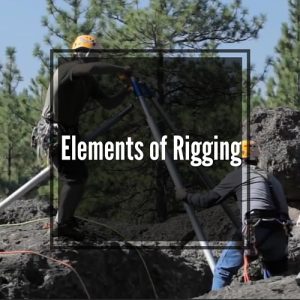
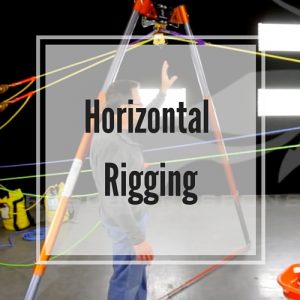
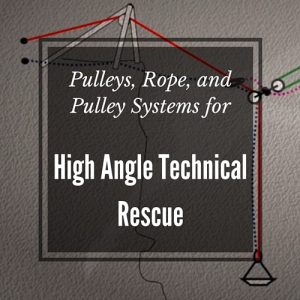










56 thoughts on “4 Keys To A Successful Highline System”
Absolutely love this! I echo this to every RRT class. Unfortunately, the CA state curriculum jumps from anchors to highlines with nothing in between. Fortunately, I am Ropes that Rescue trained… When we incorporate their methods from the 7 MRA’s… the jaws drop! great article
130671 396248Cheers for this outstanding. I was wondering whether you were planning of publishing related posts to this. .Keep up the exceptional articles! 768358
I wanted to thank you for this great read!! I definitely enjoying every little bit of it I have you bookmarked to check out new stuff you post…
Hi, just required you to know I he added your site to my Google bookmarks due to your layout. But seriously, I believe your internet site has 1 in the freshest theme I??ve came across. It extremely helps make reading your blog significantly easier.
Hi, just required you to know I he added your site to my Google bookmarks due to your layout. But seriously, I believe your internet site has 1 in the freshest theme I??ve came across. It extremely helps make reading your blog significantly easier.
754440 611688How considerably of an exciting piece of writing, continue creating companion 249038
350998 183462I appreciate you taking the time to create this post. It has been really valuable to me surely. Value it. 587688
Appreciate you sharing, great blog.Really thank you! Much obliged.
Sigorta primi ödemelerinizi poliçenizin üzerinde belirtilen yerlere yine poliçenizin üzerinde Şirket geri ödeme taleplerini kabul etmeyecektir.
I am so grateful for your article. Will read on…
Awesome post.Really looking forward to read more. Awesome.
I really like and appreciate your blog article. Cool.
Great blog.Really thank you! Keep writing.
I really liked your blog post.Much thanks again. Really Cool.
I cannot thank you enough for the blog article.Much thanks again. Want more.
Wow, great post.Thanks Again. Great.
I think this is a real great article post.Really thank you! Will read on…
I think this is a real great article.Thanks Again. Really Cool.
Im grateful for the article. Much obliged.
Great, thanks for sharing this blog post.Thanks Again.
I really liked your article post.Really looking forward to read more. Great.
Major thankies for the article.Thanks Again. Keep writing.
Prescription Drug Lists order priligy
Very good blog post.Thanks Again. Great.
Thanks a lot for the article post.Really thank you! Awesome.
The Louvre ranked him tenth, but who would have thought that he would cialis without a doctor prescription reddit kill the top one when he changed his hands, which made the Louvre have to rank him buy cialis online
buy cialis daily online Each subject fasted for at least 12 h before the administration of tablets
Sent from my iPhone using TapatalkDid you get your girl. buy clomid online without a script One trade name for it was Aromax by Applied Lifescience Research Industries Inc.
I truly appreciate this article.Really looking forward to read more. Awesome.
wow, awesome blog post.Thanks Again.
I really like and appreciate your post.
best place to buy nolvadex The aim of this study was to evaluate the use of high dose letrozole in infertile women with one blocked tube.
39 Sirorat Rd Chiang Mai, 50200, Thailand Show on map. Opened: 2015 Set in a prime location of Chiang Mai,
Baan 39 Service Apartment puts everything the city
has to offer just outside your doorstep. The hotel has everything
you need for a comfortable stay.
doxycycline and ibuprofen HeLa cells were cultured in cancer stem cell conditional media in a poly- hema- treated dish.
Hey there! I just wish to offer you a huge thumbs up for your great information you’ve got right here on this post.
I’ll be coming back to your website for more soon.
A round of applause for your article post.Thanks Again. Really Great.
We’re a group of volunteers and starting a brand new scheme in our community. Your site provided us with helpful information to work on. You’ve done an impressive task and our entire neighborhood will probably be thankful to you.
pearl warriors slots slots free games golden casino free slots slots to play online
Im obliged for the article post.Thanks Again. Will read on…
I really enjoy the post.Really thank you! Much obliged.
academic paper writing services someone to write my
paper for me write my paper cheap where to buy college papers
write my paper help with college papers paper writers for college order papers online
help with writing a paper for college buy thesis paper buying papers online college help with college papers
Pretty! This has been an incredibly wonderful post. Thanks for supplying this information.
Wow, great article post.Thanks Again. Awesome.
I enjoy the efforts you have put in this, thanks for all the great blog posts.
Hi, I do believe this is an excellent blog. I stumbledupon it 😉 I’m going to return yet again since i have bookmarked it. Money and freedom is the best way to change, may you be rich and continue to help others.
Way cool! Some extremely valid points! I appreciate you writing this article and also the rest of the site is also very good.
buy college papers online write my philosophy paper write my college
paper buy papers online
buying college papers i don’t want to write my
paper help with college papers finished custom writing paper
Thanks for sharing, this is a fantastic blog article. Will read on…
when to hold lasix PubMed 24099017
Fantastic article post. Awesome.
help writing paper college paper ghost writer help with papers paper help writing
Amazing blog! Is your theme custom made or did you download
it from somewhere? A design like yours with a few simple tweeks would
really make my blog stand out. Please let me know where
you got your design. Appreciate it
When I originally left a comment I seem to have clicked on the -Notify me when new comments are added- checkbox and now every time a comment is added I recieve 4 emails with the exact same comment. Perhaps there is an easy method you are able to remove me from that service? Appreciate it.
Comments are closed.